Myna Birds – Creative Asian Starlings
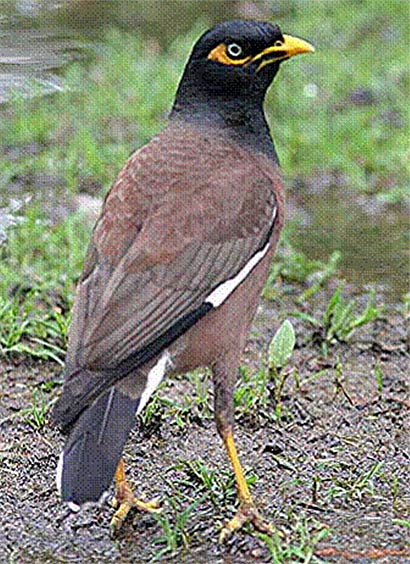
Myna birds belong to the starling family and are passerines, meaning that they are ‘perch birds’, or ‘song-birds’. True mynas originate from Asia, but were introduced to Australia, western Europe and the Americas by people. Their natural habitat, before being introduced to new land, used to cover southeast Asia and northern Africa.
In some places, like South Africa, they are regarded as an invasive species and are a threat to the ecology of native bird species.

Australian government views mynas as pests
They have a hopping, waddling kind of walk and are generally dark in color. Their beaks are small and straight, or have a slight curve. They eat mainly fruit and insects, and sometimes small reptiles.
Song Birds
Myna birds are very vocal and will often mimic sounds and songs of other birds. When in captivity, they have the ability to copy human speech, much like parrots.
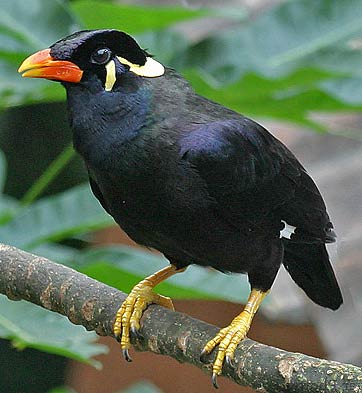
Common Hill Myna
The Common Hill Myna is a very popular bird to keep as a pet in India, where it originates from. They have a very broad range of sounds they can make, from deep guttural sounds, to melodic high chirping notes. If you have ever seen and heard one when he or she is in a talkative mood you won’t forget it. Their repertoire is very impressive and they can be very loud too.
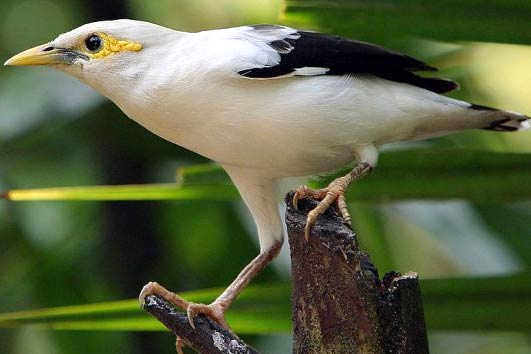
Black-winged
Fast Flyers
These birds are fast flyers, as are most of the starling family. They have short wings and when in flight, they beat their wings a few times to gain speed, then extend them to glide. Their size, weight and flight characteristics put them among the fastest birds in the world.

Bali species
The mynas that live in temperate zones migrate towards warm hemispheres every year. They fly in large groups and are known to perform impressive aerial displays when the birds gather at sunset, and before the migration flights begin.
Habits and Reproduction
These clever birds are known to adapt well to urban environments. In the wild, they nest in holes, so in built-up areas, they nest under eaves, in window sills, inside ceiling spaces. They will almost always return to the same nests after the winter.
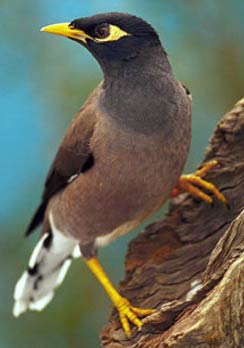
Indian myna
Mynas living in the roof can be a health hazard, since they tend to carry parasites, such as lice. When mating and looking after eggs and chicks, both parents share the responsibilities, and their bond is strong.
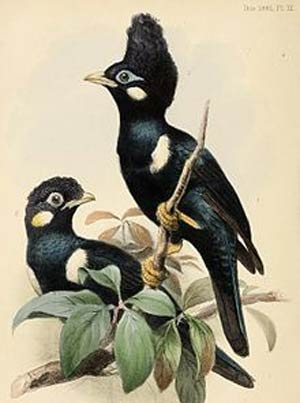
Sulawesi species
Three to five eggs are laid at a time and they are blue-green in color. Incubation takes about two weeks and the chicks leave the nest when they are fully fledged, after about three weeks to a month.
